Rear Derailleur — Advanced Troubleshooting
This article will review troubleshooting rear mechanical derailleur shifting.
Preliminary Info
Troubleshooting refers to extra issues or features that go beyond normal set up and adjustment. It is best always to begin with basic adjustment procedures of limit screw settings, indexing, and B-screw adjustments. This will typically take care of most shifting problems.
Cable System
The cable system is a common place to find issues that cause poor shifting. Friction along the shift cable prevents consistent movement of the derailleur as the cable is pulled and released at the shifter.
Dirt and grit can work their way inside the housing. This creates friction along the system, which will slow the shifting in both directions. If there is rust, replace the cable.
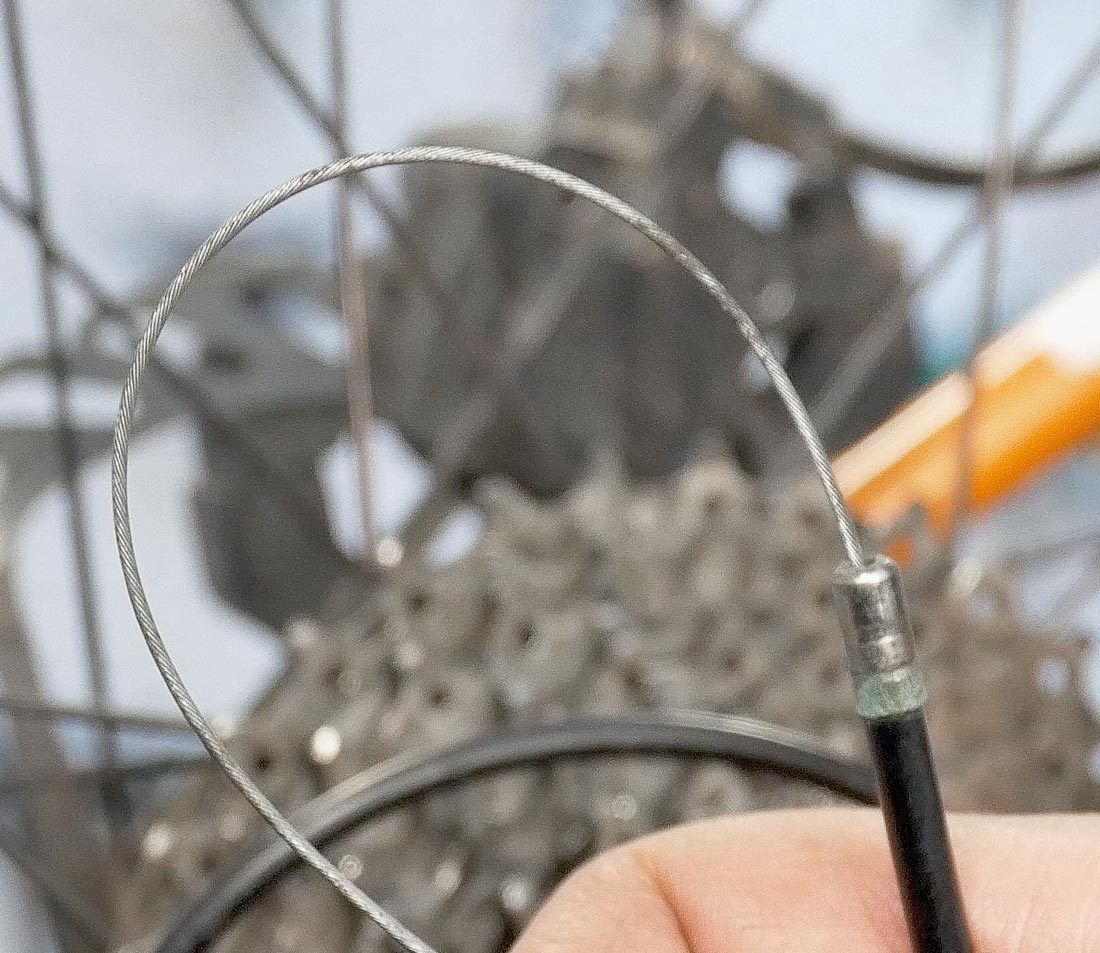
Inspect the bike for housing and housing stops. If there is bare exposed cable, look at the housing stop for a split or opening. On these bikes you can get a closer look at the cable by putting the bike in the lowest gear, then without pedaling, shift the derailleur to slacken the cable. Remove the housing from the stops.
With the cable free from the housing, slide the housing back and forth to feel how freely it slides. You can also wipe the cable and throw on some lube. Put the housing back and see if it helps shifting.
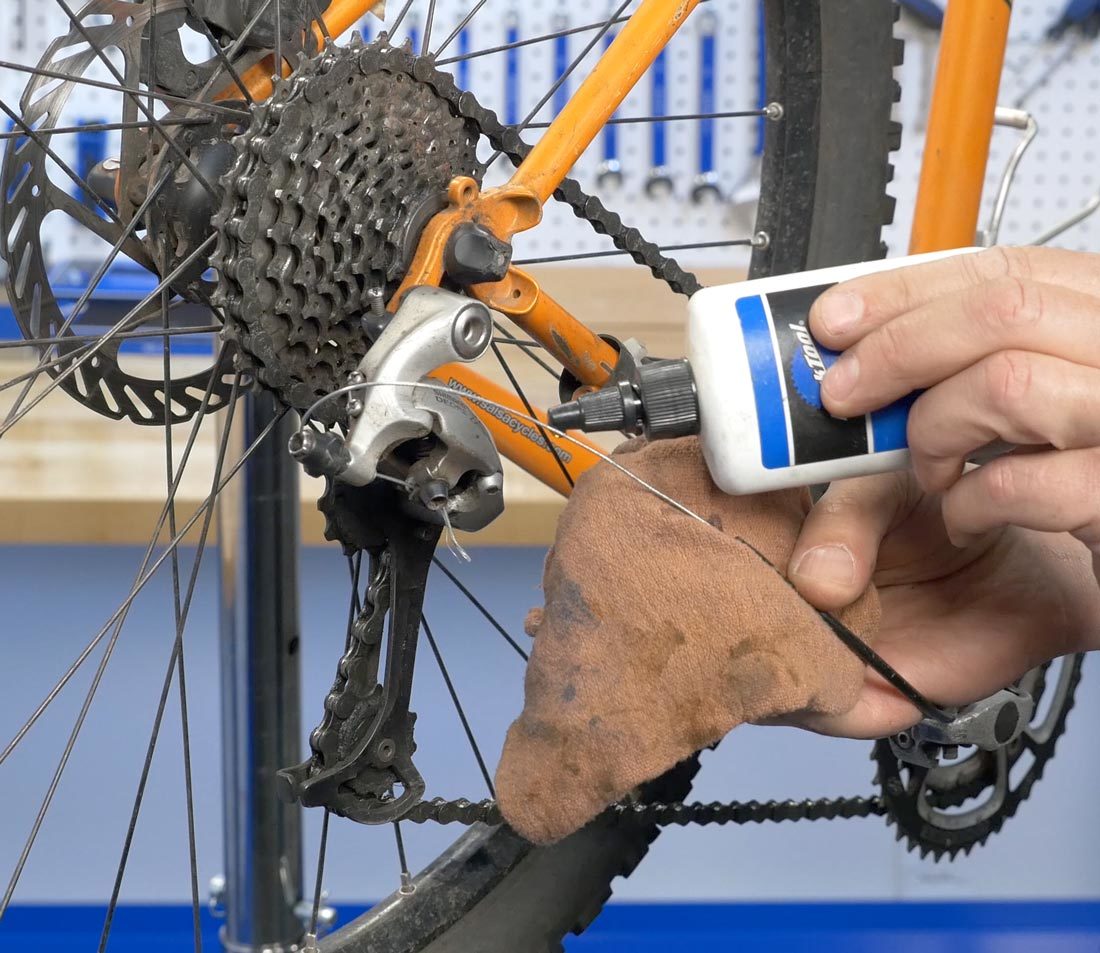
However bikes may also use full housings from shifter to derailleur, without exposed wire or stops. You cannot free the cable in the same way. You will need to loosen the pinch bolt to get a feel for how the cable is operating. If it is difficult to pull the cable back as it is released from the shifter, there is a problem in the system. Typically, the solution is to install new cable and housing.
Also inspect outside of the housing, especially at the ends. Bent housing or bent caps will cause excessive friction. Here again replacement of the housing and the cable is the best option.
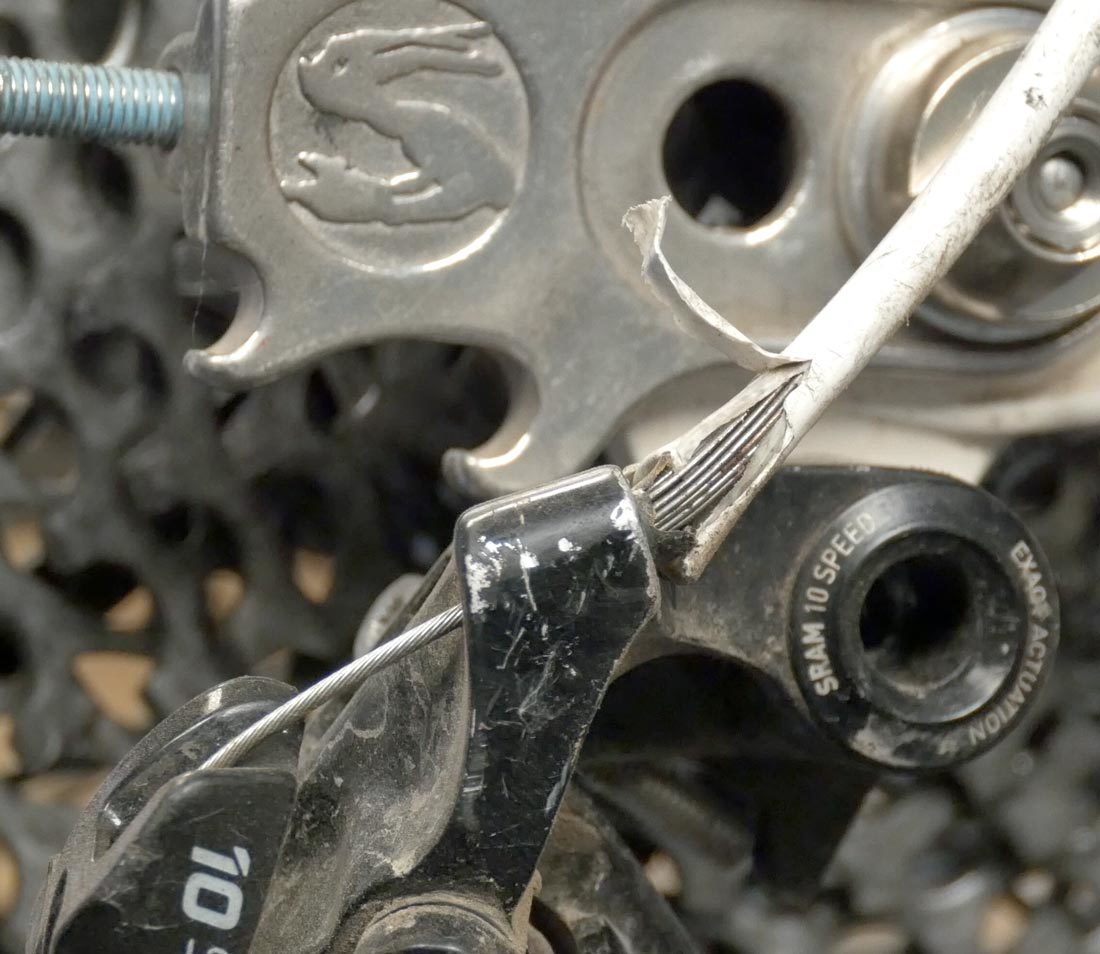
An often overlooked place for friction is the bottom bracket cable guides. Bare cables may pass under the shell and this contact is not easily seen. If the guides get dirty it will slow the cable passage.
Bent Hanger
The rear derailleur is attached to the frame with a hanger. These are commonly aluminum but may also be steel. Crashing or throwing the bike down on the right side can bend this hanger. Once bent, the derailleurs and pulleys are not going to align with the sprockets. Sight from behind the bike and see if the hanger looks parallel to the wheel and sprockets.
It is possible to both check and repair the hanger with a derailleur hanger alignment tool, such as the DAG-2.2 or DAG-3. See how to correct this in our Rear Derailleur Hanger Alignment article.
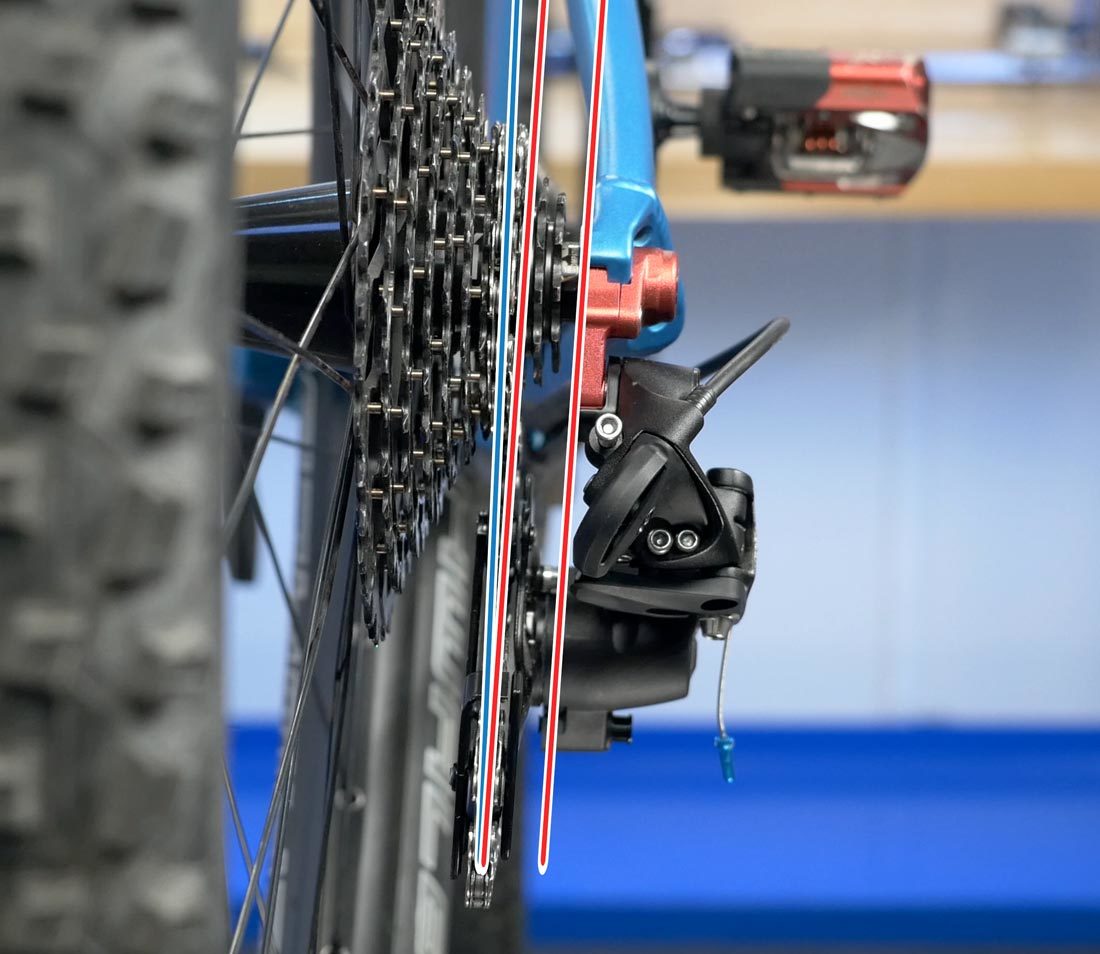
Incompatible Equipment
Drivetrains work best when designed together, so all the parts are in harmony. But as components get replaced, it can happen that components do not work well together. An obvious example is using a SRAM shifter in the 1:1 mode with a Shimano rear derailleur. The required cable is different between the two, and there is no adjustment to make them the same.
Another example is using wound brake housing in the place of compressionless shift housing. The wound housing acts like a big spring and will compress to take up cable travel during shifting. It is not going to transmit the pull nearly as well as the compessionless housing.
Chains can also be the source of compatibility issues. Chains come in different widths for 9, 10, 11 and 12 speeds. There are also differences in side plate shapes. Typically try to stick within your brand and drivetrain model. Trial and error or asking experienced mechanics for recommendations is another option.
Chain Issues
Chains take a lot of abuse, transmitting the power to the rear wheel, and they don’t last forever. The internal parts of the chain, the rollers and rivets, begin to wear down and give the illusion of stretching. This wear can cause the chain to mesh poorly with the cogs and chainrings, causing poor shifting and premature wear to the cogs. Inspect your chain to see if it falls within the limits of tolerable wear.
Also check for adequate lubrication. A dry chain will feel sluggish when shifting and will make excessive noise when pedaling.
Worn Derailleur
All derailleurs wear out at some point. Check for wear by pulling laterally on the lower cage. Compare this movement in the linkage of a new derailleur. Sloppy pivot and linkages will produce inconsistent shifting, and the only solution is a new derailleur.
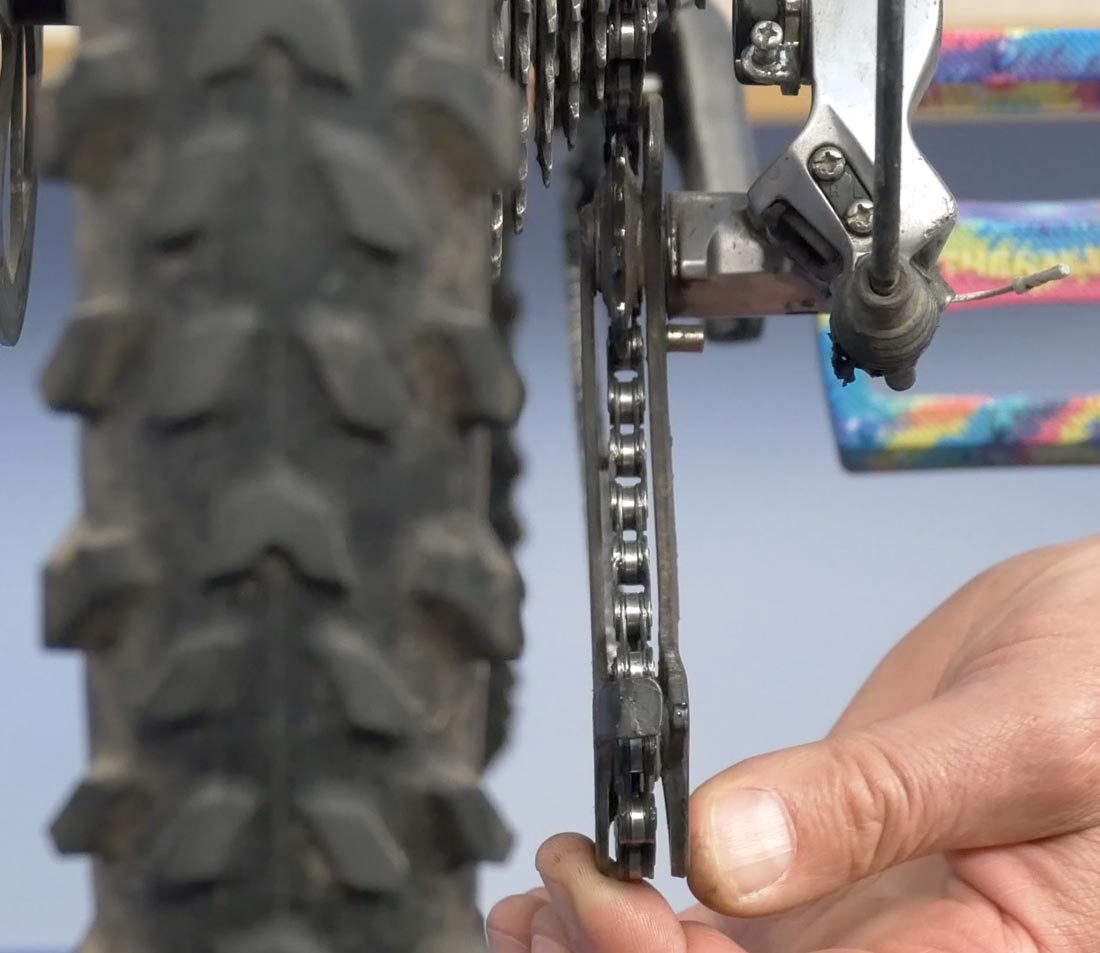
Worn Shift Levers
Shift levers use a ratchet system to move the cable from gear to gear. The teeth of these gear like systems can become worn as well as get contaminated with grit and dirt. If the ratchets get worn, they will not consistently move and position the cable, making good shifting nearly impossible. You may try to flush the gearing but replacement is the best option.
Table of Common Issues
| Shifting Symptom | Potential Problem | Potential Solution |
|---|---|---|
|
Chain skips in all gear combinations | Poor index setting | Readjust indexing |
| Shifting slow or hesitant for either inward or outward shifts | Friction in the cable system | Lubricate and/or replace cable and housing |
| Shifting is slow or hesitant on inward shifts | Poor indexing adjustment with too much cable slack | Turn barrel adjuster counter clockwise |
| Shifting is slow or hesitant on outward shifts | Poor indexing adjustment with shift lever positons too far inward | Turn barrel adjuster clockwise |
| Chain skips under pressure in favorite one or two gears | Sprockets and chain may be worn out | Inspect and replace sprockets and chain |